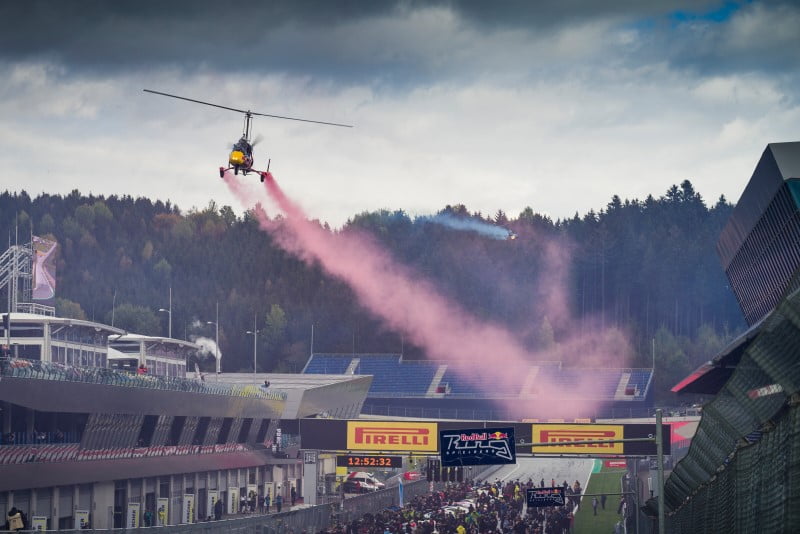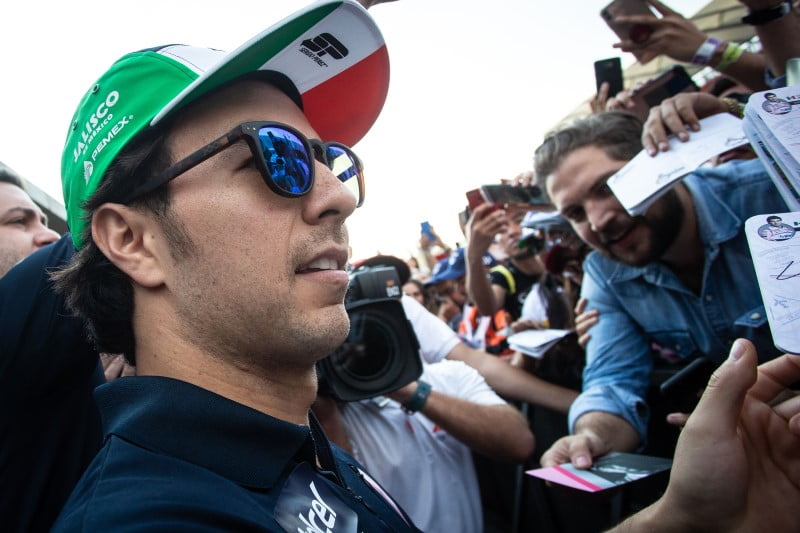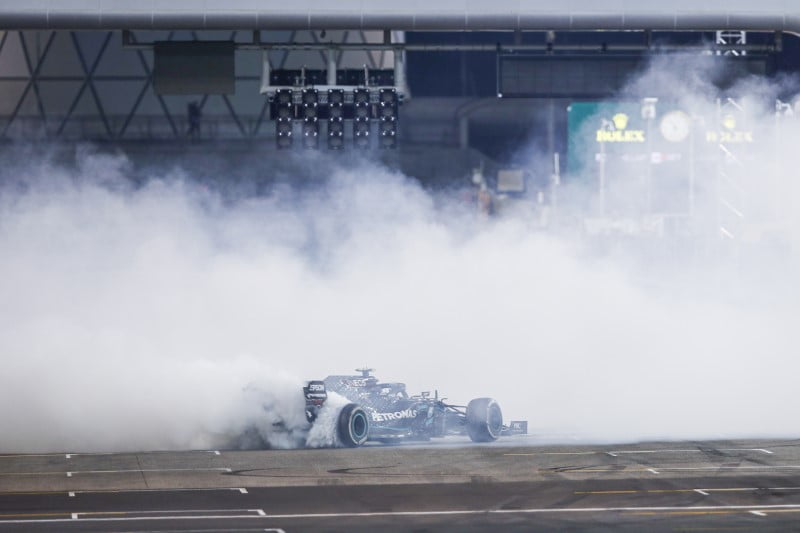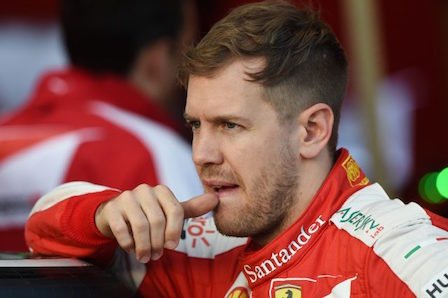‘Know Your F1 Circuit’ is a new series launched on my F1 blog. The posts under this series will be penned by Saumil Patel, an avid fan of the sport. You can follow the full series throughout the season by using the ‘Know Your F1 Circuit’ tag. This week’s post focuses on the ‘Red Bull Ring’, the venue of the Styrian & Austrian Grands Prix.
Formula 1 racing had a shaky and sporadic start in Austria. The first Austrian Grand Prix was flagged off in 1964 at the Zeltweg Air base. During the course of the race many cars had to retire. On investigating it was found that the track was extremely bumpy which led to suspension failures and hence the track was declared unsuitable for Formula 1 racing. The lap record of 1:09.84 is held by Graham Hill in a BRM.
Know Your F1 Circuit: Austria, History
It was only after five years in 1969 that the Osterreichring circuit (Austrian Circuit) was built across the street as a replacement circuit. The first Formula One race was flagged off in 1970. The circuit layout was designed to be a very fast one with fast sweeping corners. It featured elevation deviations of 65 meters, tight widths of around 10 meters and a dangerous 180-degree banked downhill right-hand corner (Bosch Kurve) with virtually no run-off. Noteworthy corners were the flat-out right hander “Voest-Hugel” which led up to the “Sebring-Auspuff Kurve” and the technical corners “Dr. Tiroch” and “Glatz Kurve”.
Unfortunately, the circuit had two disturbing shortcomings which would ultimately sound its death knell. The start – finish straight was extremely constricted at 9.1 meters (standard width is around 18 to 24 meters) which resulted in pile ups or accidents if cars broke down, stalled, or overtook. The fact that the circuit had virtually no protection from trees and embankments also became a very grave concern considering that the speeds kept increasing over the years.
The 1987 race was marred by multiple accidents. McLaren’s Stefan Johansson narrowly avoided serious injury colliding with a deer at over 150 mph totalling his car during qualifying. The race saw two restarts due to accidents on the narrow start grid. These incidents prompted the FIA to declare that the circuit was too dangerous and deemed it unfit for Formula 1 racing. The 1987 Austrian Grand Prix was the last Formula 1 race on the circuit.
Eighteen Formula 1 Austrian Grands Prix were held between 1970 and 1987, Alain Prost was the most successful driver (3 wins) and Lotus-Ford the most successful constructor (4 wins). Interestingly Ford powered cars have been most successful with 9 wins.
Know Your F1 Circuit: A1 Ring, Austria
Eight years later in 1995, cellular service providers A – 1 appointed Hermann Tilke to redesign the layout in a bid to bring back motor racing and Formula 1 by sponsoring the costs. Within two years the circuit was remodelled and renamed “A – 1 Ring”. The new circuit was shortened to 4.326 km, the fast-sweeping corners were replaced by tight right handers, the first half of the backstretch run up to the Bosch-Kurve was replaced with a bypass that went directly onto the second half of the fast uphill backstretch offering a better chance for overtaking. The gambit paid off and the circuit was once again added to the Formula 1 calendar in 1997. Unfortunately, the Formula 1 event failed to make money and eventually the circuit was taken over by the local authorities.
Seven Formula 1 Austrian Grands Prix were held between 1997 and 2003. Drivers Michael Schumacher and Mika Häkkinen have both won twice and constructors Ferrari and McLaren-Mercedes won three races each.
In 2008 Red Bull owner Dietrich Mateschitz bought the circuit and commenced the € 70 million reconstruction of the track, hoping that it would add value to the local Spielberg economy and ultimately stage Formula 1 races. But it was not until 2014 that the Austrian Grand Prix returned with the help of Bernie Ecclestone. Red Bull spruced up the infrastructure by adding a vehicle dynamics facility, off-road area and a go-kart track, as well as two hotels and a country club. The circuit was aptly renamed as Red Bull Ring.
The stage for Round 8 ??
? Red Bull Ring, Austria#StyrianGP ?? #F1 pic.twitter.com/pR6JPnrLfq
— Formula 1 (@F1) June 23, 2021
Know Your F1 Circuit: Red Bull Ring
The Red Bull Ring is situated in the heart of the Styrian mountains, a very picturesque location amidst forests and mountains. Although the laps are short, they are fast and challenging with three DRS zones. The first half is uphill from corner 1 through corner 5 and power will reign supreme, there onwards it is downhill and technical.
Corner one and three are a tight 90º right hander, corner four is a technical right-hand hairpin, corner six is a left-hand sweeper, corner seven is 90º left hander and corners nine and ten are right handers. Car setup will be more compensatory, the high altitude will push the turbochargers to the limit as they have to compensate for rarefied air and spin at a much higher rate. Maintaining the optimal disc and caliper temperatures with four heavy braking points and short in between distances may also pose a problem. Fewer corners will also mean MGU-K recovering lesser energy whilst braking.
Most teams will be considering setting up for medium to high downforce. Watch out for the super-fast Honda-powered cars of Red Bull Racing and AlphaTauri go atop the speed traps this weekend!
- Circuit Certification: Grade 1
- Circuit Classification: Permanent Race Circuit
- Circuit Direction: Clockwise
- Pole position: Left-hand side of the track
- Circuit Length: 4.318 kms
- Race Distance: 306.58 kms
- No. of Laps: 71
- Track Width: 12m to 13m
- Elevation: 677 m above sea level
- Elevation Deviation: 65m
- Longest flat-out section: 868m
- Number of Corners: 10 (6 right)
- Gear Changes Per Lap: 32 (estimated)
- Fuel use per lap: 1.48kg (estimated)
- Lap Record: 1:05.619 – Carlos Sainz (2020)
Remember when @LewisHamilton took pole by over 1.2 seconds in Styria last year? ?
Has anyone seen the forecast for the weekend… ?#StyrianGP ?? #F1pic.twitter.com/UPA963nEkR
— Formula 1 (@F1) June 23, 2021
Did you know?
- Mercedes have won five of the seven races (Two by Rosberg and Bottas, one by Hamilton)
- Ferrari have dominated the second step of the podium (Four times)
- Ferrari and Williams have both stood third on the podium twice
- Nico Rosberg, Valtteri Bottas and Max Verstappen have all won the race twice
- Valtteri Bottas has started from pole three times
- Red Bull Ring has the quickest overall lap time
- By far Mercedes has been the most successful constructor at the Red Bull Ring, followed by Ferrari and Red Bull Racing. Mercedes drivers have eight podium finishes followed by Ferrari with six
- Red Bull Racing have had somewhat limited success in taking the podium four times (Max Verstappen x 3 & Daniel Ricciardo x 1)
Red Bull Racing has won the last three races – their first such feat in the hybrid-turbo era. Let’s see if they can add a fourth (and fifth!) at their home Grand Prix!
Saumil Patel is an avid fan of Formula 1. He aims to take you deeper into the sport by uncovering the lesser read.














